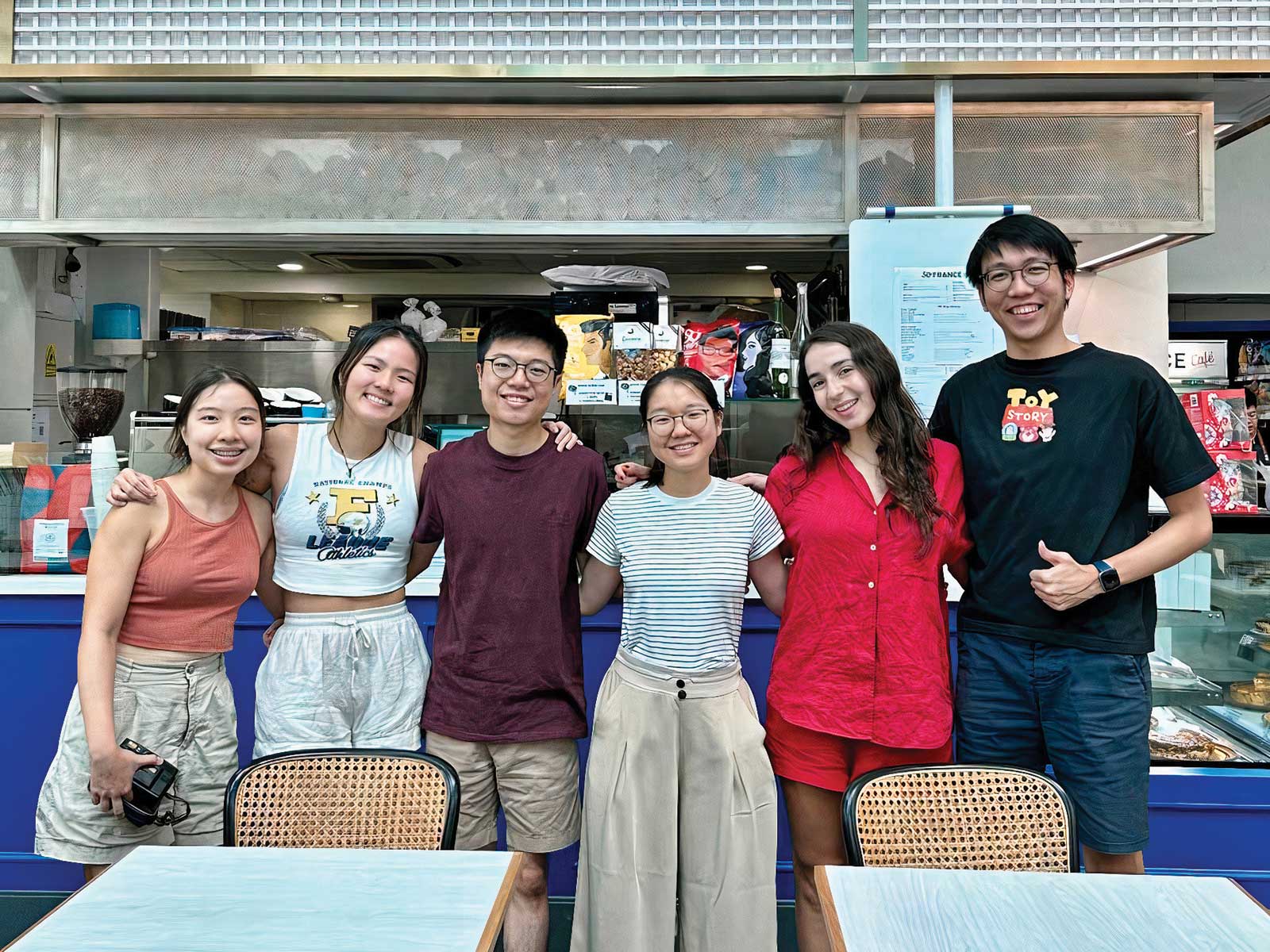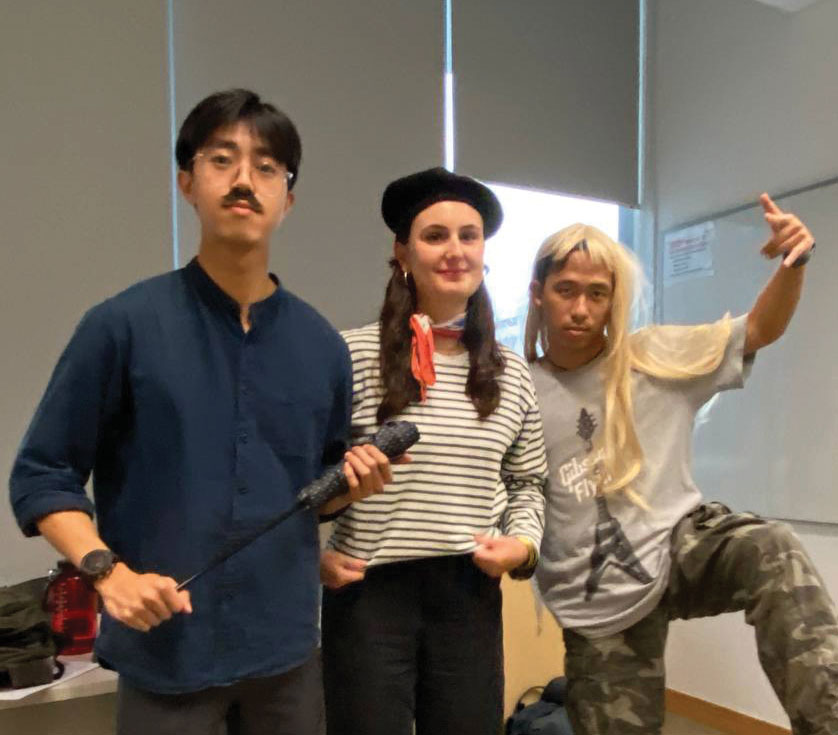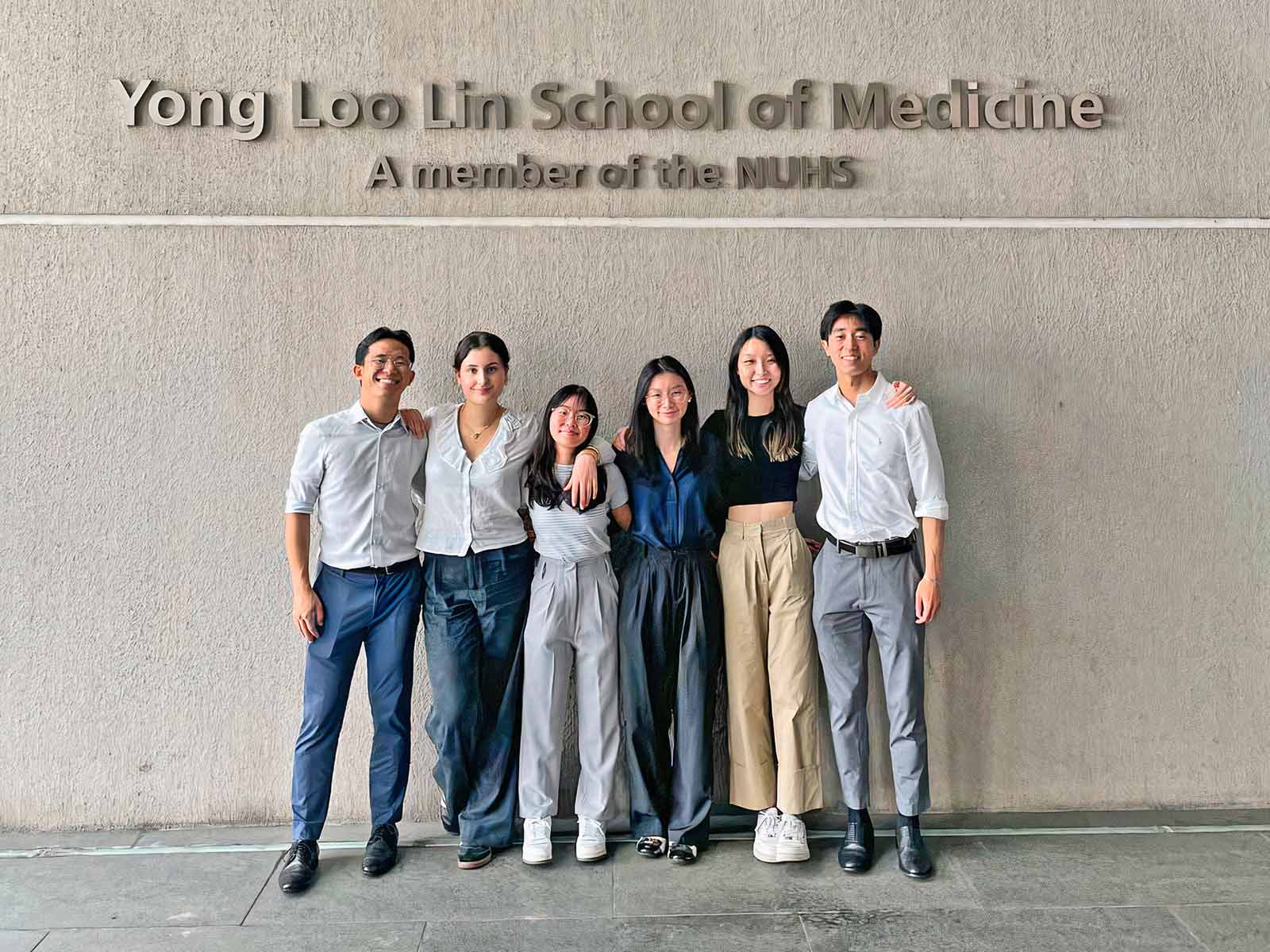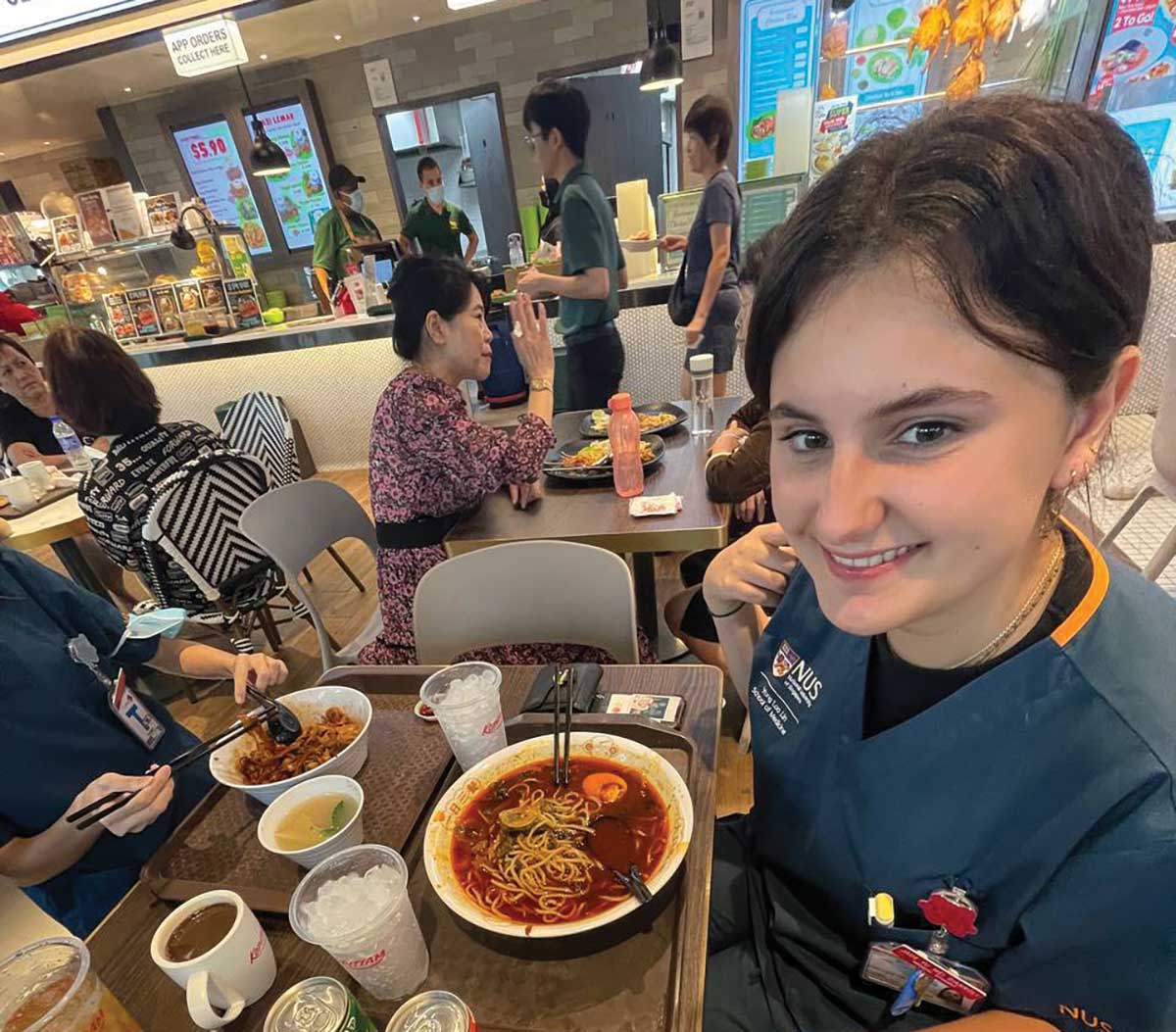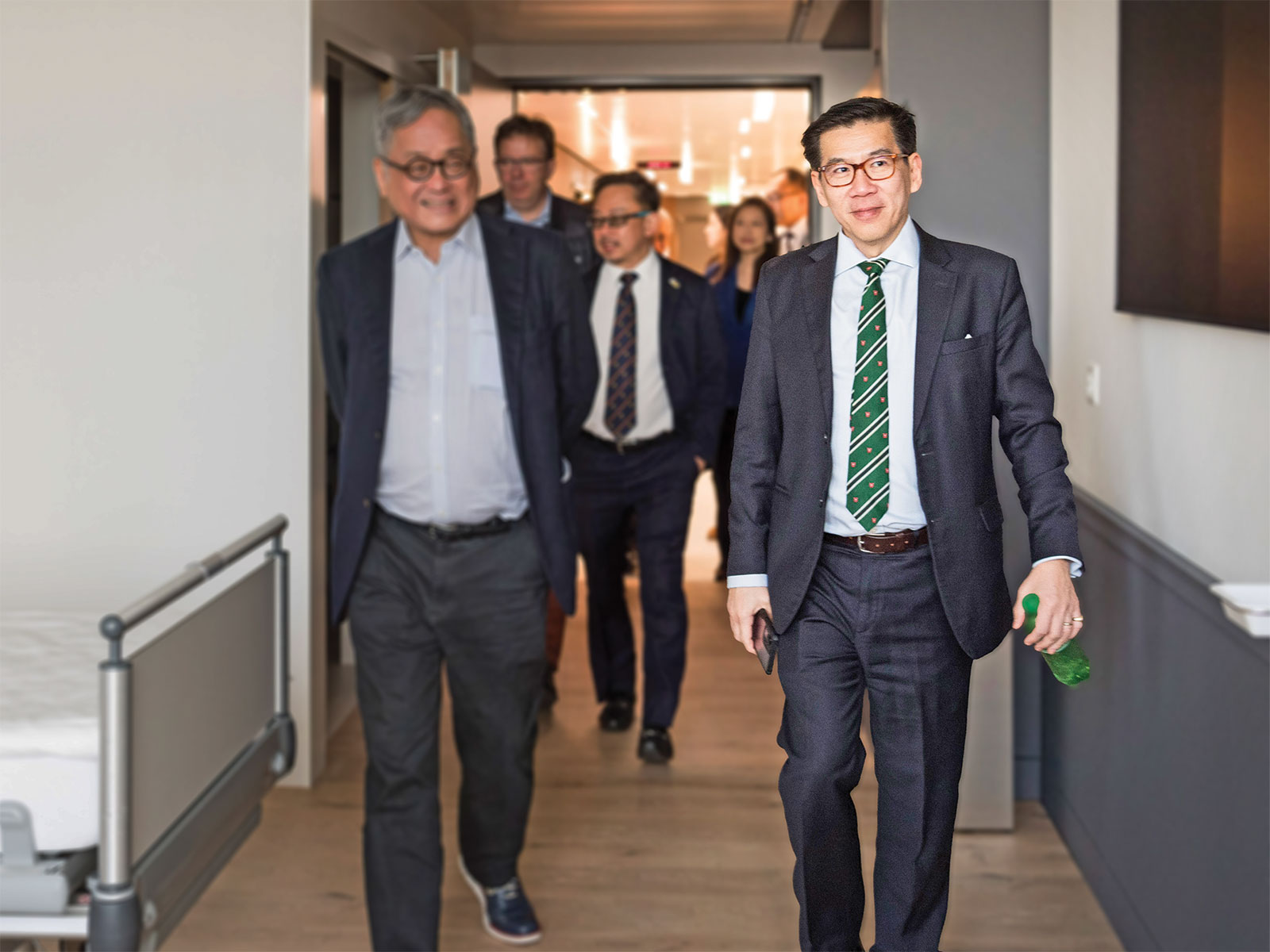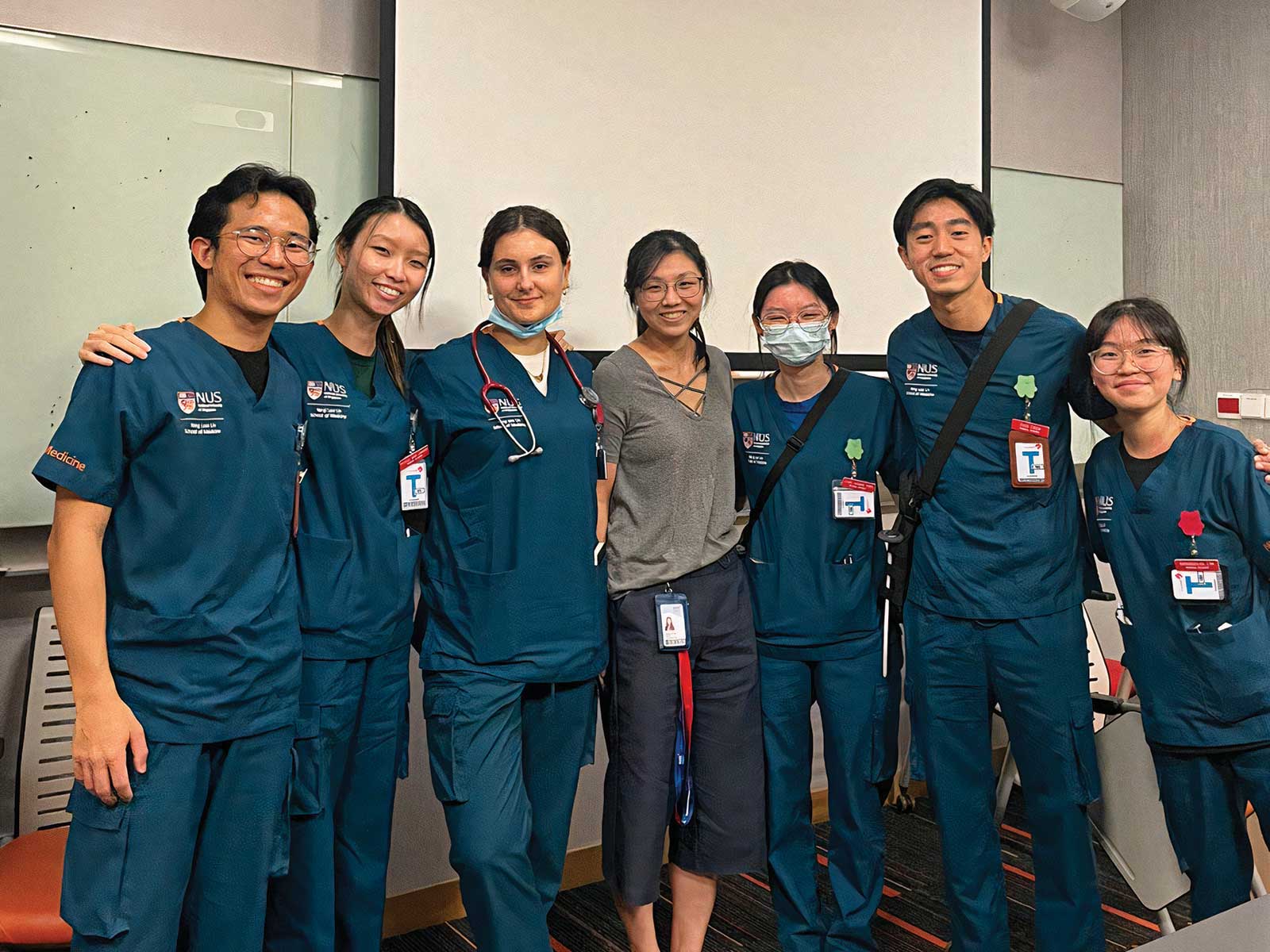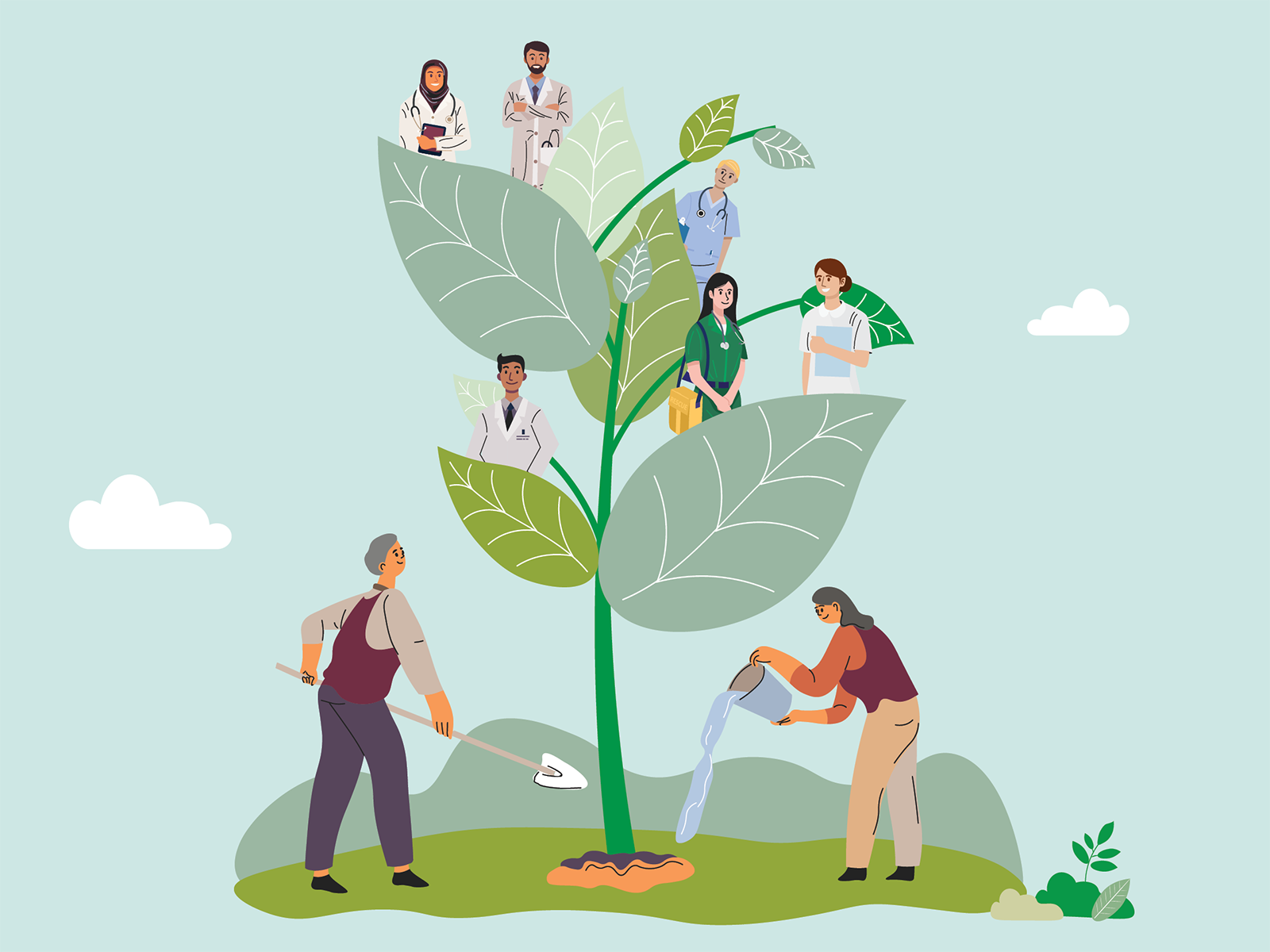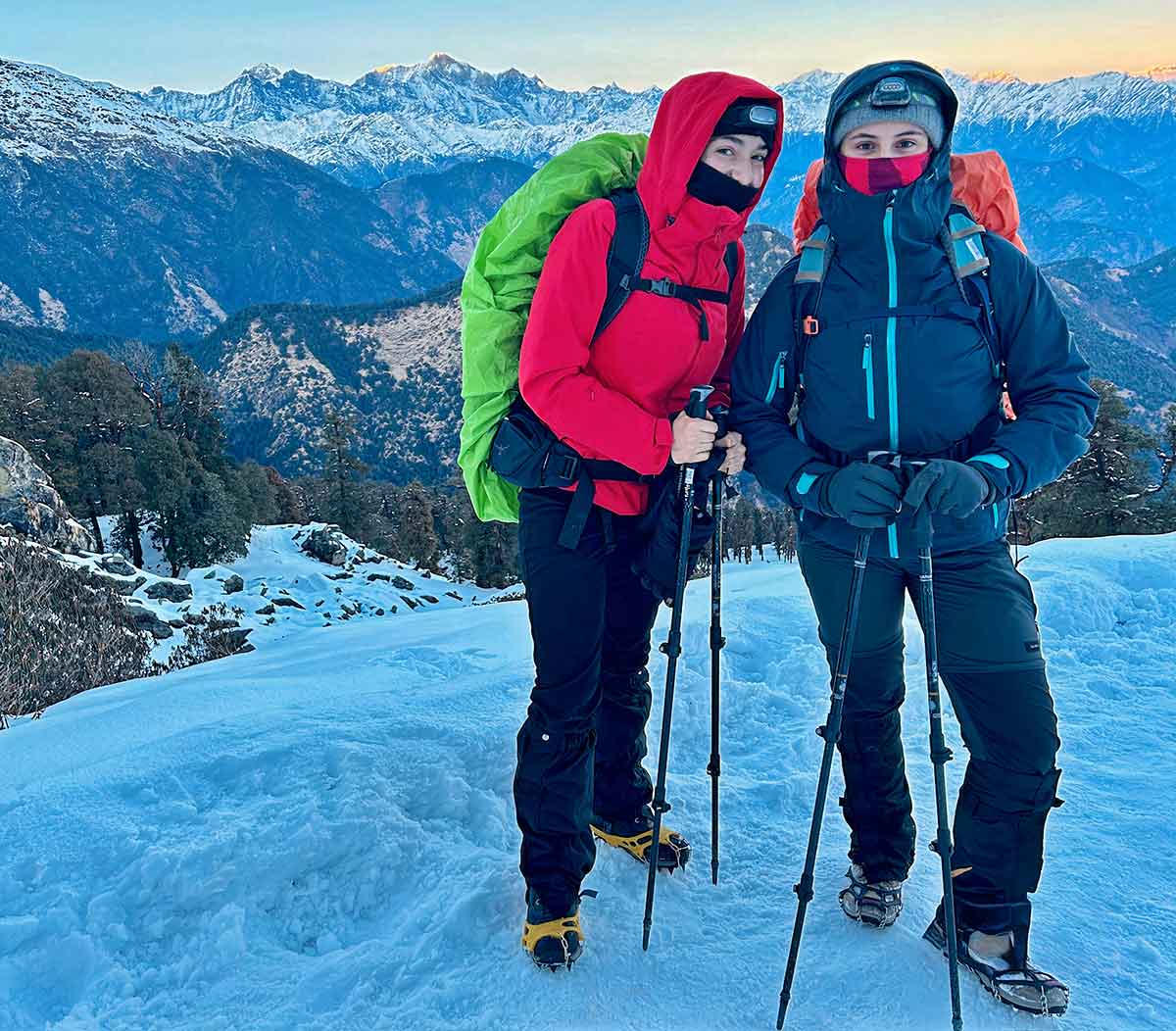
Natasha and Jade during their Himalayan trek.
Why did you choose NUS Medicine?
Jade: Growing up in Asia, I have always been drawn to Singapore, for both its proficiency as a country and its academic excellence. Hence, when applications for this exchange programme opened, I applied immediately, and the excitement of an adventure at NUS Medicine ensued.
I wanted to discover more about the workings of a different healthcare system, to glean a better understanding of Singapore. I also hoped that this experience would help me get a better idea of how, where, and why I want to practise medicine.
As the first batch of students in this exchange programme, both Natasha and I were thrilled and a little fearful, but I have no regrets choosing Singapore and NUS Medicine.
Natasha: Being half Italian, I initially intended to pursue an exchange programme in Rome, to do an Erasmus, the European Union student exchange programme. But when Singapore was presented as an option—I chose it without qualms.
I was most attracted to the opportunity of an additional clinical year that we don’t have in France. Across all the postings, during our time here, we were in the hospitals for most of the day, seeing patients and interacting with doctors. This form of invaluable clinical exposure only takes place later in France, during our fourth year of medical school. It was the main opportunity I hoped to seize, and was grateful to have.



